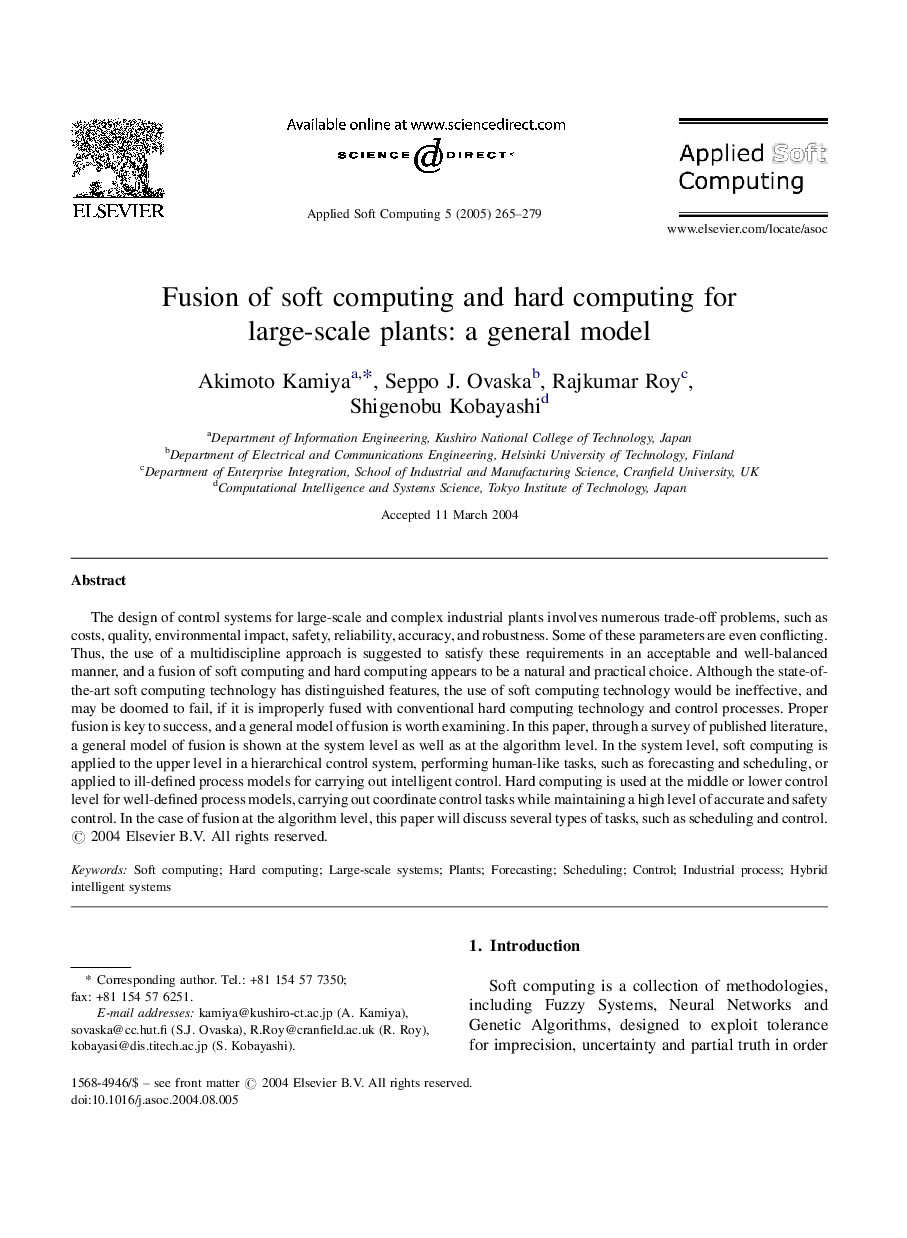| Article ID | Journal | Published Year | Pages | File Type |
|---|---|---|---|---|
| 10349249 | Applied Soft Computing | 2005 | 15 Pages |
Abstract
The design of control systems for large-scale and complex industrial plants involves numerous trade-off problems, such as costs, quality, environmental impact, safety, reliability, accuracy, and robustness. Some of these parameters are even conflicting. Thus, the use of a multidiscipline approach is suggested to satisfy these requirements in an acceptable and well-balanced manner, and a fusion of soft computing and hard computing appears to be a natural and practical choice. Although the state-of-the-art soft computing technology has distinguished features, the use of soft computing technology would be ineffective, and may be doomed to fail, if it is improperly fused with conventional hard computing technology and control processes. Proper fusion is key to success, and a general model of fusion is worth examining. In this paper, through a survey of published literature, a general model of fusion is shown at the system level as well as at the algorithm level. In the system level, soft computing is applied to the upper level in a hierarchical control system, performing human-like tasks, such as forecasting and scheduling, or applied to ill-defined process models for carrying out intelligent control. Hard computing is used at the middle or lower control level for well-defined process models, carrying out coordinate control tasks while maintaining a high level of accurate and safety control. In the case of fusion at the algorithm level, this paper will discuss several types of tasks, such as scheduling and control.
Keywords
Related Topics
Physical Sciences and Engineering
Computer Science
Computer Science Applications
Authors
Akimoto Kamiya, Seppo J. Ovaska, Rajkumar Roy, Shigenobu Kobayashi,
